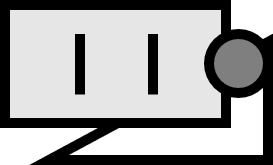Definition of Surfaces in Differential Geometry
Definition1
If for every point $M \subset \R^{3}$ of $P \in M$, there exists an $C^{k}$ diffeomorphism $\mathbf{x} : U \subset \R^{2} \to M$ such that the image $\mathbf{x}(U)$ contains some $\epsilon-$neighborhood $N_{p}$ of $P$, then $M$ is called a $\R^{3}$ surface.
Moreover, for such two diffeomorphisms $\mathbf{x} : U \to \R^{3}$ and $\mathbf{y} : V \to \R^{3}$,
$$ \mathbf{y}^{-1} \circ \mathbf{x} : \mathbf{x}^{-1}\left( \mathbf{x}(U) \cap \mathbf{y}(V) \right) \to \mathbf{y}^{-1}\left( \mathbf{x}(U) \cap \mathbf{y}(V) \right) $$
is a $C^{k}$ coordinate transformation.
Description
A $\R^{3}$ surface is, simply put, a composition of the images of simple surfaces.
As with many definitions, it is not easy to judge based on the definition alone whether something is a surface or not. There is the following theorem regarding the determination of a surface.
Theorem2
Let there be a differentiable function $g : \R^{3} \to \R$ and a constant $c \in \R$. For a set $M = \left\{ (x,y,z) : g(x,y,z) = c \right\}$, if at some point of $M$
$$ dg = \dfrac{\partial g}{\partial x}dx + \dfrac{\partial g}{\partial y}dy + \dfrac{\partial g}{\partial z}dz \ne 0 $$
holds, then $M$ is a surface.
